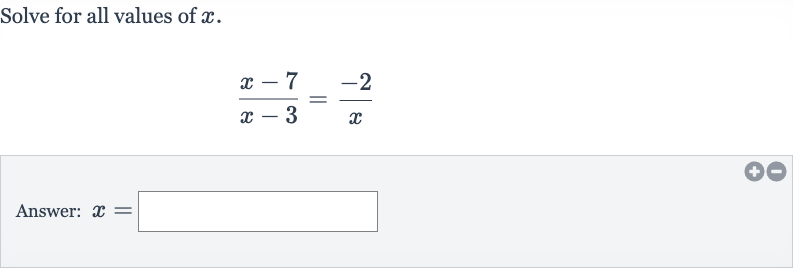AI tutor
Full solution
Q. Solve for all values of .Answer:
- Set Up Equation: First, we need to set up the equation given by the problem: . To solve for , we will cross-multiply to eliminate the fractions.
- Cross-Multiply: Cross-multiplying gives us: x - \(7) * x = () * (x - )\. This will allow us to create a quadratic equation.
- Expand Equation: Expanding both sides of the equation, we get: . This simplifies the equation and prepares it for further manipulation.
- Move Terms: Next, we will move all terms to one side of the equation to set it equal to zero: .
- Factor Quadratic: Combining like terms, we get: . This is the quadratic equation we need to solve for .
- Set Equal to Zero: To solve the quadratic equation, we can factor it: .
- Solve for : Setting each factor equal to zero gives us the potential solutions for : or .
- Check Solutions: Solving each equation for gives us the solutions: or .
- Check : However, we must check these solutions against the original equation to ensure they do not make any denominator equal to zero, as that would be undefined.
- Check : Checking : The original equation's denominators are and , neither of which is zero, so is a valid solution.
- Check : Checking : The original equation's denominators are and , neither of which is zero, so is a valid solution.Checking : The original equation's denominators are and , neither of which is zero, so is also a valid solution.

